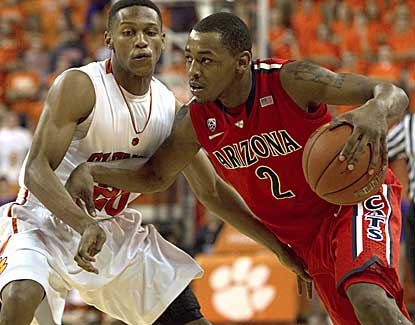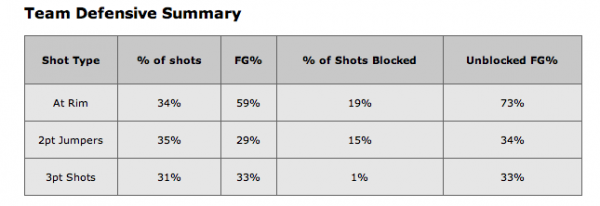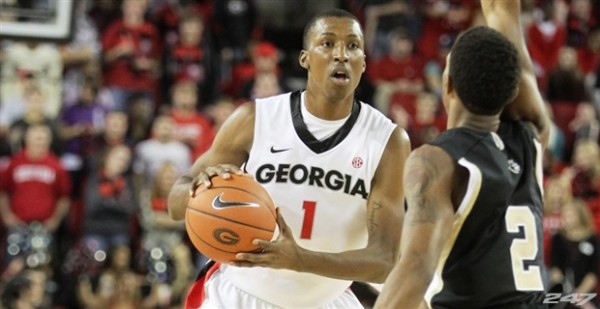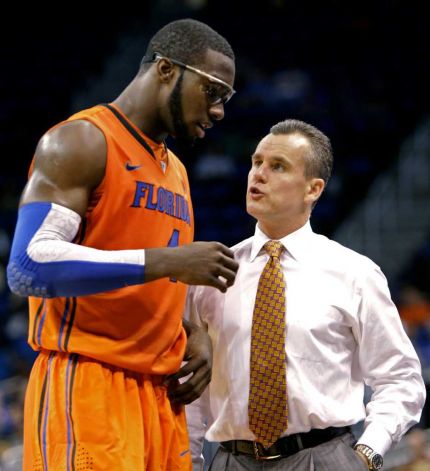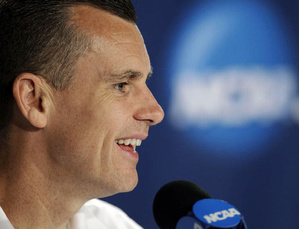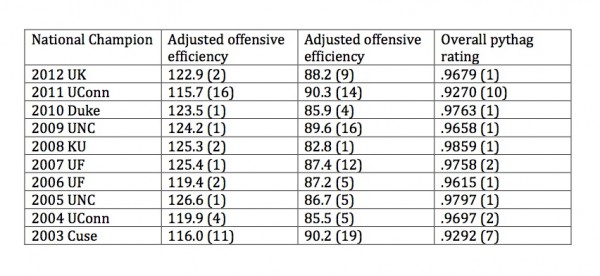Posted by Brian Joyce on November 27th, 2012
Every week, the SEC microsite will post a composite power ranking list for the league’s performances coupled with a short commentary justifying each team’s specific ranking. Week two’s SEC Power Rankings:
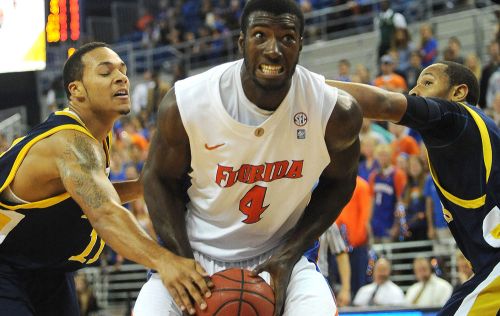
Patric Young’s Offensive Rebounds Are One Way To Get Additional Touches (Getty)
- Florida – Florida continues to roll, and it’s partially because it has more opportunities to score than its opponents. The Gators currently sit in the top 15 in the nation in offensive rebounding percentage at 42.9 percent. UF grabbed 17 offensive rebounds against Savannah State, and then another 19 against Central Florida. Center Patric Young has 14 offensive boards in the Gators’ five games this season. If Florida can commit to defensive rebounding the way it has on the offensive end, then the Gators may stay at the top of the charts.
- Kentucky – Ryan Harrow returned to be with the team on Sunday, so this is officially a new team. Most will point to his effect on the offensive end, but the Cats need his help the most on defense. Last year’s national championship squad didn’t allow a team to shoot over 40 percent from the field until North Carolina squeaked by at 41.8 percent in the eighth game of the year. In five games so far this season, three teams (Duke, Lafayette, LIU) have connected on over 40 percent of its shots. Improvement in this area can’t be placed solely on Harrow, but if he can stop penetration in the lane then that could be a good start to becoming a better overall defensive club.
- Missouri – Missouri had a tough loss to Louisville, and followed that up with a good win over VCU. The Tigers desperately need Michael Dixon to return. Dixon possessed an impressive 56.6 effective field goal percentage last season, which is significant because if the Tigers don’t plan on guarding anyone then the next best plan is to try and outscore their opponents in a shootout. Mizzou is seeing the effects of being a couple of years out of the Mike Anderson era at this point. Last season, the Tigers forced a turnover percentage of 21.6 percent, but that number is down to just 18 percent this year.
- Alabama – Who are these shooters that are connecting on over 40 percent from beyond the arc? Aren’t these the same guys who shot 28.9 percent from three-point land last year? The Crimson Tide had a stifling defense in 2011-12, but shot their way out of entirely too many games. Alabama needed consistency from the outside, and now it has that in Trevor Releford and Trevor Lacey. Whatever they’re doing in Tuscaloosa should continue. Read the rest of this entry »
| microsites, sec
| Tagged: alabama, arkansas, auburn, florida, georgia, kentucky, lsu, mississippi state, missouri, ole miss, south carolina, tennessee, texas a&m, vanderbilt
Share this story






























